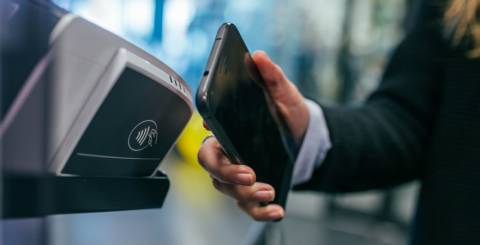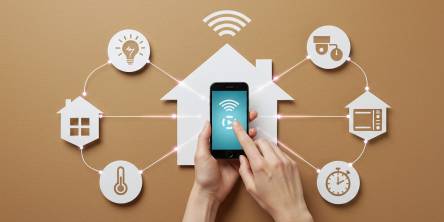Harnessing the Power of Contactless Payments in a Post-Covid Era

When we talk about mobile payments, there is no denying that it has revolutionized the way we facilitate transactions today. Businesses, banks & financial institutions have leapfrogged into a new future with these technologies. NFC payments are one such example of new-age payments. It has experienced tremendous growth and is expanding even further to become a mainstream transaction option. With millions of mobile users and the current health crisis still a part of our reality, the need for digital payments is becoming even more critical. But how can businesses capitalize on these trends? This article offers insights into how you can transform & offer customized services to your customers.
The Driving Force Behind Contactless Payments
Businesses like yours find it important to understand the technology that powers contactless payments. It gives you an idea about the upgrade to the latest technologies and the budget for an upcoming project. Mainly, there are two types of contactless payments. We will look at both.
Contactless Cards
When a user steps forward to initiate a payment, the card instantly starts to interact with the point of sale (POS) terminal through NFC (near field communication). The card then generates a code that is unique to each transaction. This makes payment safe & secure. There is no need for the shopper to provide their PIN or a signature. This also comes with a limit on each transaction which is called Cardholder Verification Limit (CVM). Financial institutions the world over, however, are working towards increasing the limit on transactions, especially during COVID-19 lockdown.
E-Wallets
E-Wallets or mobile wallets, these payments have accelerated as a trend since users look for more convenient and safer ways of payment. Apple Pay, Google Pay, Masterpass & Venmo are some of the most popular mobile wallets available. Tokenization is the reason why mobile wallets are safe. All sensitive data is transformed into a token of value. This token helps in protecting all sensitive data since these transactions take place frequently.
Riding the Digital Wave through Contactless Technologies
The fintech companies must extend their services & evolve with changing consumer demands. Let’s help you understand how you can tap on new growth opportunities through a few approaches:
Creating a Collaborative Environment for Traditional Banks & FinTech
FinTech companies have scored big with millions of users adapting to new forms of payment. They centered their services around excellent user experience and high-value services. At the same time, participation from banks has also massively increased over the years. This is helping bridge the gap between traditional and modern banking. Banks now have opportunities to innovate and develop skills to develop FinTech solutions that are unique to their brand & services. Additionally, bank incubators are stepping forward to help startups who are in their early stages of growth.
Putting Digital Innovation at the Center of Banking Operations
Open banking and European Payment Services Directive have taken digital services to a whole new level. Banks and third-party providers are stepping forward to access customer financial information with permission to strengthen relationships with customers through innovative services and applications.
Open banking follows decentralized practices that allow users to exchange data with banks ensuring that all data is well-protected. Banks and financial institutions can also invest in APIs that provide insights on transactions & financial history to provide more customized products & services.
Keeping the Customer at the Heart of Services
All these services you provide are of course catered to the needs of the evolving & educated consumer. User experience is even more critical today as customers continue to spend more time indoors. However, even after the pandemic, digital devices will continue to play a critical role in how users make payments.
Digital wallets will have an even more important role to play since customer habits will drastically change. They will want transactions to take place faster & in an easier manner. That’s where banks & financial institutions must step in to offer innovative products & services.
To make innovative services a success, financial institutions & banks must have in place a robust customer onboarding strategy with a right approach to NFC app development that places confidence in consumers. Today, an efficient & effective eKYC process is critical to streamlines & accelerate processes.
Summing Up
While the COVID-19 pandemic did disrupt daily life, it has certainly brought new trends to the surface. Digitalization across the world is one of the key drivers. Digital payments are the way forward. Banks & financial institutions must capitalize on these trends to stay relevant while maintaining and growing their customer base.
Similar Articles
Modern businesses are drowning in communication overload, and much of that burden stems from outdated tools that simply can’t keep up
Building lending software isn’t just a technical project—it’s a business decision. Whether you're a fintech founder or part of a traditional lending institution trying to go digital, three questions will shape everything that follows
Learn why robust security is crucial for super app development. Explore key strategies and best practices for mobile app development security.
Walkie-talkies with an extensive reception capacity have changed significantly when it comes to portable communication by displaying cutting-edge features with seamless connectivity that covers more than just the state
USB-C technology has revolutionized the way we charge our devices, offering faster charging speeds, higher power delivery, and universal compatibility across multiple devices
Discover expert mobile app development strategies to create a viral app that attracts users and boosts engagement
Optimize app localization for iOS users across the EU with language, cultural, and regulatory adaptations. Engage users and boost retention with these tips!
Discover the top 10 mobile app development trends of 2024! Explore 5G, AI, AR/VR, blockchain, and more to stay ahead in the ever-evolving app development landscape.
With its triple-lens design and fantastic photo and video quality, the iPhone 11 Pro Max is extensively acknowledged for its superior camera system. But problems can occur with also one of the most advanced technologies. If you're having issues with the iPhone 11 pro max camera lens, knowing the typical problems and how to repair them









